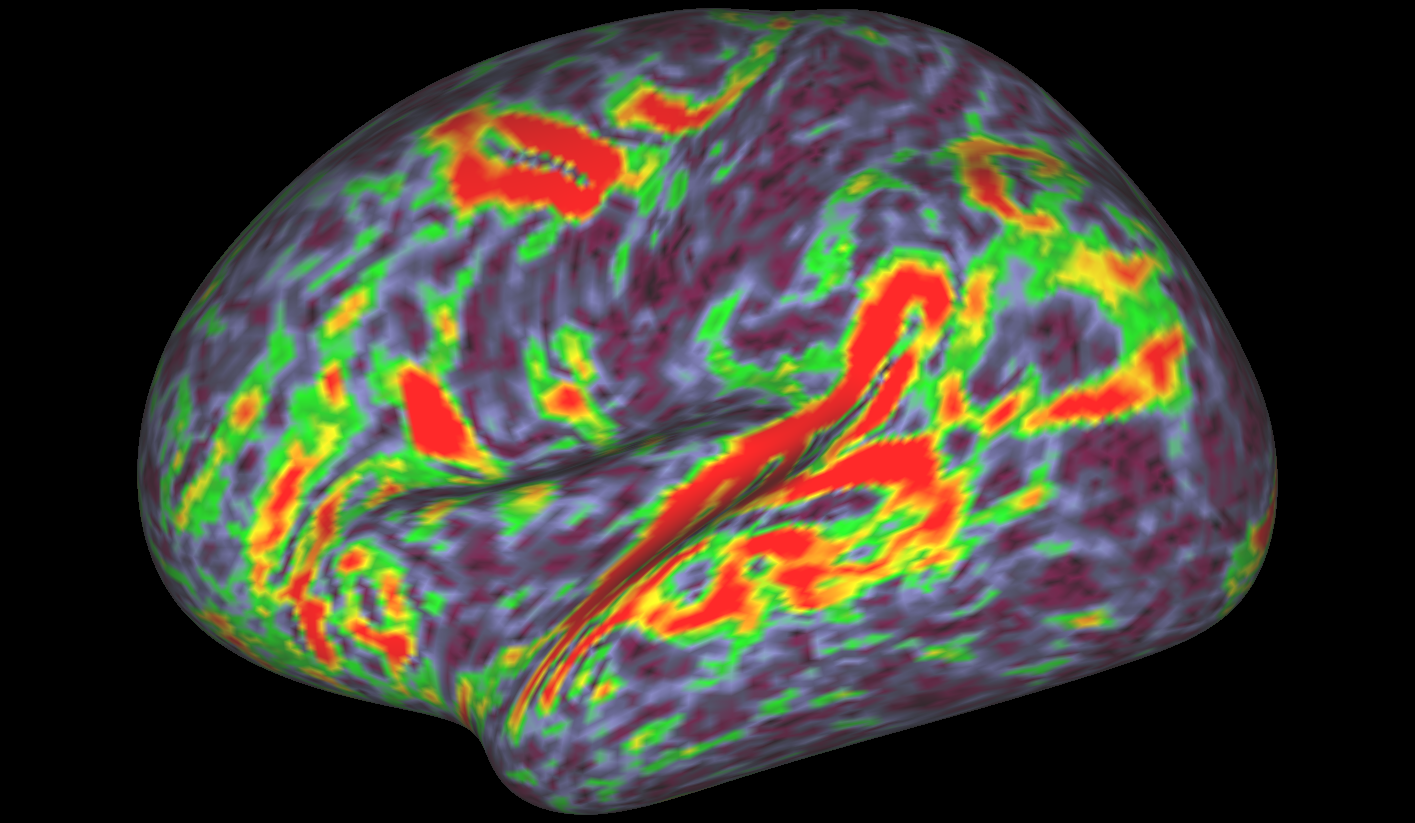

Credit: Matthew Glasser, Ph.D., and David Van Essen, Ph.D., Washington University
Mapping the brain regions responsible for thought, language, emotion and the myriad of other functions that make us human is the central quest of neuroscience and is critically important for understanding brain disorders. Last week, researchers funded by the National Institute of Health’s (NIH) Human Connectome Project (HCP) reported that analysis of brain imaging from 420 volunteers yielded a map of 180 distinct areas in the brain’s cortex—including 97 previously unknown regions—and that they have also developed software that automatically detects the “fingerprint” of each of these areas in an individual’s brain scans.
The HCP was launched in 2010, as an NIH Blueprint for Neuroscience Research grand challenge, with the goal of optimizing the acquisition and sharing of data about the structural and functional connectivity of the human brain. It has greatly advanced the capabilities for imaging and analyzing brain connections, resulting in improved sensitivity, resolution, and utility of those images. Over 1000 subjects have already participated in this ongoing project to map the brain circuits as the brain develops through childhood and then ages later in life. Studies underway will allow scientists to identify the changes in brain circuits by comparing the neuroimaging of persons with brain disorders with the large data sets of controls. Just six years after its inception, the HCP has provided an unparalleled compilation of neural data and an interface to graphically navigate this data to better understand the brain.
In April 2013, building and capitalizing on a number of advances in nanoscience, physics, bioengineering and neuroscience, including the early progress made by the HCP, President Obama launched the Brain Research through Advancing Innovative Neurotechnologies (BRAIN) Initiative®. The imaginative scientists funded by the BRAIN initiative are developing highly innovative technologies that will map the brain in action by showing how individual cells and complex neural circuits interact in both time and space. These technologies will enable scientists to fill major gaps in our current knowledge and provide unprecedented opportunities for exploring exactly how the brain is able to record, process, utilize, store, and retrieve vast quantities of information, all at the speed of thought. These technologies will be critically important in more precisely diagnosing and treating neurological, psychiatric, and substance abuse disorders, which are all manifestations of brain circuit dysfunction.
The BRAIN Initiative has grown to include investments from five Federal agencies: the Defense Advanced Research Projects Agency (DARPA), the National Science Foundation (NSF), Intelligence Advanced Research Projects Activity (IARPA), the Food and Drug Administration (FDA), and the NIH. The President’s 2017 Budget also proposes funding for the Department of Energy (DOE) to join DARPA, NSF, IARPA, FDA, and NIH in advancing the goals of the BRAIN Initiative. Major foundations, private research institutions, and companies, including the Howard Hughes Medical Institute, Allen Institute for Brain Science, the Kavli Foundation, the Simons Foundation, GE, GlaxoSmithKline, members of the National Photonics Initiative, as well as patient advocacy organizations and universities, have committed over $500 million to the BRAIN Initiative. In total, the BRAIN Initiative has already catalyzed more than $1.5 billion in public and private funds.
125 projects have been funded by NIH under the BRAIN Initiative to date, many of which will complement the insights of and accelerate the advancement of the tools being developed under the HCP. Specific areas of focus for the NIH component of the BRAIN Initiative include developing and applying improved methods for compiling a “parts list” of all the nerve cell types, simultaneously monitoring the activity of many neurons, linking brain activity to behavior with precise tools that allow researchers to modulate neural circuit activity, building next generation neuroimaging tools, and ultimately developing innovative technologies to understand the human brain and treat its disorders.
The results announced earlier this week and the research that is still being pursued under the HCP and the BRAIN Initiative are examples of what President Obama meant when he said, at the launch of the BRAIN Initiative, “We have a chance to improve the lives of not just millions, but billions of people on this planet through the research that's done in this BRAIN Initiative alone. But it's going to require a serious effort, a sustained effort. And it’s going to require us as a country to embody and embrace that spirit of discovery that is what made America, America.”
Walter Koroshetz, M.D., is Director of the National Institute of Neurological Disorders and Stroke at the NIH, and Co-Director of the NIH BRAIN Initiative.
Gregory K. Farber, Ph.D., is Director of the Office of Technology Development and Coordination at the National Institute of Mental Health at the NIH.


